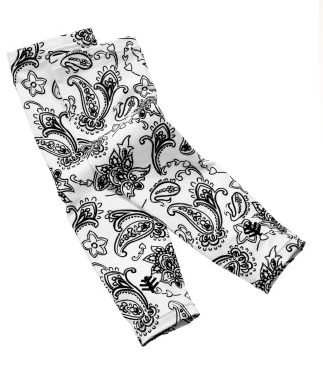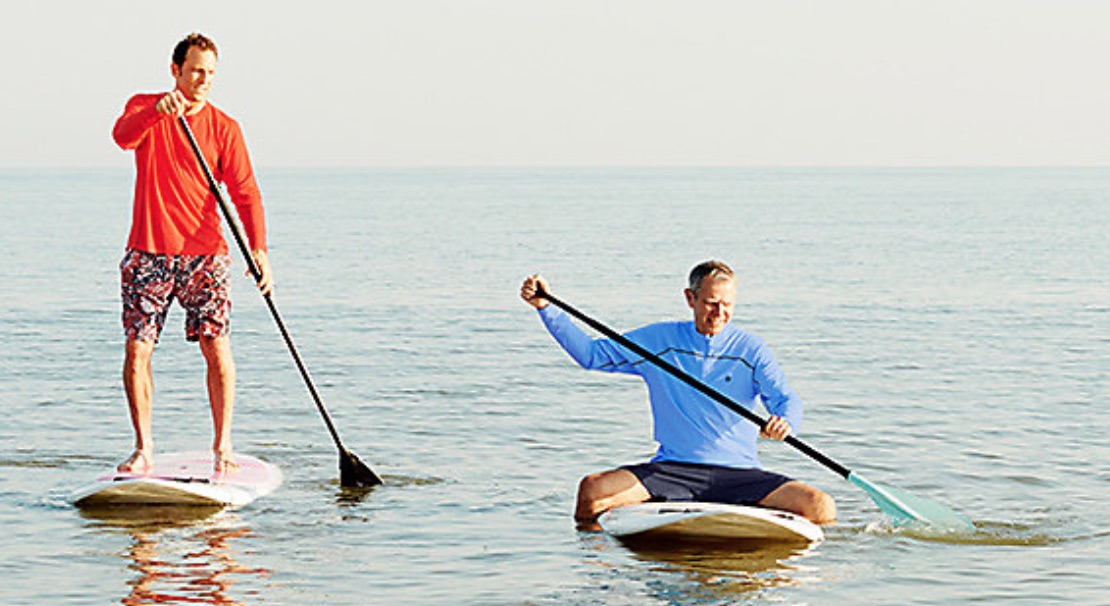Sun protection clothing
Sun protection clothing provides an efficient option to protect yourself from the sun's UV rays, especially when done in addition to the use of sunscreen.
Sun protection clothing variety
There is a wonderful variety of protective clothing items:
- long, medium length and short pants,
- long-sleeved and short-sleeved shirts,
- full swimsuits,
- range of hats
- close-toed shoes
Babies and young children are especially prone to the damaging effects of the sun because their skin is so much more delicate and sensitive. Subsequently the sun protective clothing range for children is quite comprehensive.
Sun protection clothing and UPF
 Sun protective sleeve for cycling, running, etc
Sun protective sleeve for cycling, running, etcWhile regular every day clothing offers its own amount of protection from the sun, there is special sun protection clothing that has fabric that is formulated to ward off the UV rays far more efficiently than the average material does.
Generally, it is made of very tightly knitted fabrics that effectively block out any ultraviolet rays that penetrate your clothing and onto your skin.
Clothing of this caliber is certified and labeled with a UPF rating, which stands for "ultraviolet protection factor". It is represented by a number that is acknowledged globally, similar to the SPF on sunscreen products.
There are many websites and specialty stores that offer these protective garments which are designed for clothes from daily wear to speciality items, including the following for all ages:
- specific sporting clothes
- hiking clothes
- safari clothes
- swimwear
- beachwear
What exactly is the UPF for Sun protection clothing?
 Sun protection clothing measurement -UPF
Sun protection clothing measurement -UPFThe history behind material actually being certified with a UV-protection number appears to have started formally in the 1990s in Australia, where skin cancer had become a national and widespread health focus.
Apart from the fact that many people had used sun protection clothing in places like North Africa for many centuries, it wasn't until researchers in Australia actually developed a fabric testing procedure for UV transmission that an official certification process evolved.
A UPF rating system as shown in the chart above was the result.
Globally, clothing manufacturers seem to have adopted this system.
The system is very simple in its interpretation. A UPF rating of 50+ indicates that the fabric tested will allow only 1/50th, or roughly 2%, of the UV radiation to pass through it.
Equally so, a garment rated UPF 25 permits roughly 4%, or 1/25th, UV transmission.
The higher the number, the better the protection the fabric offers. However, the maximum certified is 50+. ie. Any fabric that allows less than 2% UV transmission is simply labeled UPF 50+.
Fabrics affect the quality of sun protection clothing
As I am sure you are aware, any material will in some way stop the UV rays from access to your skin. But the various fabrics will behave differently.
The UV rays are not absorbed by fabric in any way at all. What happens when the UV rays and textiles interact is that the energy of the UV rays is converted to heat. This transformation makes these rays harmless to the skin.
However, the quality of the fabric as well as the manufacturing process, will result in some of the clothes offered being far more effective than others for sun protection. Elements such as the garment construction process, the dyes used and the fabric treatments can vary enormously.
Many countries have adopted the lead from Australia with UPF certifications, including a minimum certification of 15 and a maximum of 50+. As a good benchmark, an ordinary T-shirt will on average rate between UPF 5 and UPF 8.
However, with the event of what are termed "optical brightening agents" or OBA's, which enhance the appearance of white fabrics particularly, this can affect the disruption of UV radiation capabilities of an ordinary garment. Eg. Many laundry detergents today include these OBAs, so after many washes, the fabric will likely increase its UV-protective ability.
So ultimately your T-shirt can end up with a UPF of nearly 15. This is still under the minimum from a UPF certification process perspective though.
Does fabric color affect sun clothing protection?
The color of fabric appears to be of great significance.
Most sun protection clothing offered seems to be white or very pale in color, unless part of the swimwear range, which tend to be very colorful. Color having been acknowledged as an important factor, it was also acknowledged that there are gaps in scientific data about exactly how color interacts with other factors to influence the degree of UV protection offered by a fabric.
This fact was explained by Ascension Riva of the Universidad Politecnica de Cataluna in Terrassa, Spain, in a news release from the American Chemical Society. After their research project to obtain such data, the Spanish scientists ascertained that deep blue and red cotton fabrics perform better than yellow at protecting skin against the sun's UV rays.
They tested a wide range of red, blue and yellow shades in fabrics, measuring the ability of each to absorb UV light. The result was that they found that deep blue shades had the highest UV absorption, while yellow shades had the least.
In my opinion, the darker the color of a fabric the more heat it will absorb as I feel so much cooler wearing white than say, black when walking in the sun. It will be interesting to see how colors may be used in sun protection clothing based on this type of research.





New! Comments
Have your say... please leave me a comment in the box below.